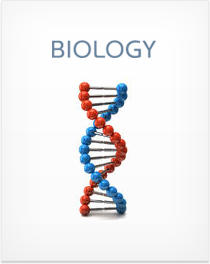Cellular Respiration and Photosynthesis
This section covers the following topics
- Anaerobic respiration
-
Aerobic respiration, including
- Glycolysis
- The Krebs Cycle
- Electron transport
-
Photosynthesis, including
- The light-dependent reactions
- The light-independent reactions
Section Summary
Anaerobic respiration occurs without oxygen and is much less efficient than aerobic respiration. In anaerobic respiration, glycolysis is followed by fermentation, which produces no ATP but does recycle NADH molecules.
Aerobic respiration is much more efficient. Glycolysis, pyruvate oxidation and the Krebs Cycle all create NADH, which is used to make ATP during electron transport. Electrons leaving the electron transport chain are very low energy and thus require an even lower energy position to travel to. Oxygen, which is very electronegative, is the only atom that enables this movement.
Photosynthesis occurs within the leaves of plants inside their mesophyll cells. ATP is produced during the light dependent reactions, which also funnel high energy electrons to the Calvin Cycle, where an enzyme called Rubisco helps to convert inorganic CO2 into organic molecules in a process called carbon fixation.
Unfortunately, Rubisco has a tendency to bind O2 instead of CO2 at high temperatures, making the process much less efficient. As a result, plants have evolved C4 photosynthesis and CAM photosynthesis, allowing for the colonization of warm areas.
Aerobic Respiration
Overview
When the muscles in your eyes contract to read this page, the energy that powers that movement comes from ATP, which is made from glucose (and other molecules). How do plants and animals manufacture ATP?
Animal cells use either aerobic or anaerobic respiration. In aerobic respiration (which requires oxygen), glucose goes through
Glycolysis —>... Sign up to continue reading Cellular Respiration and Photosynthesis >
